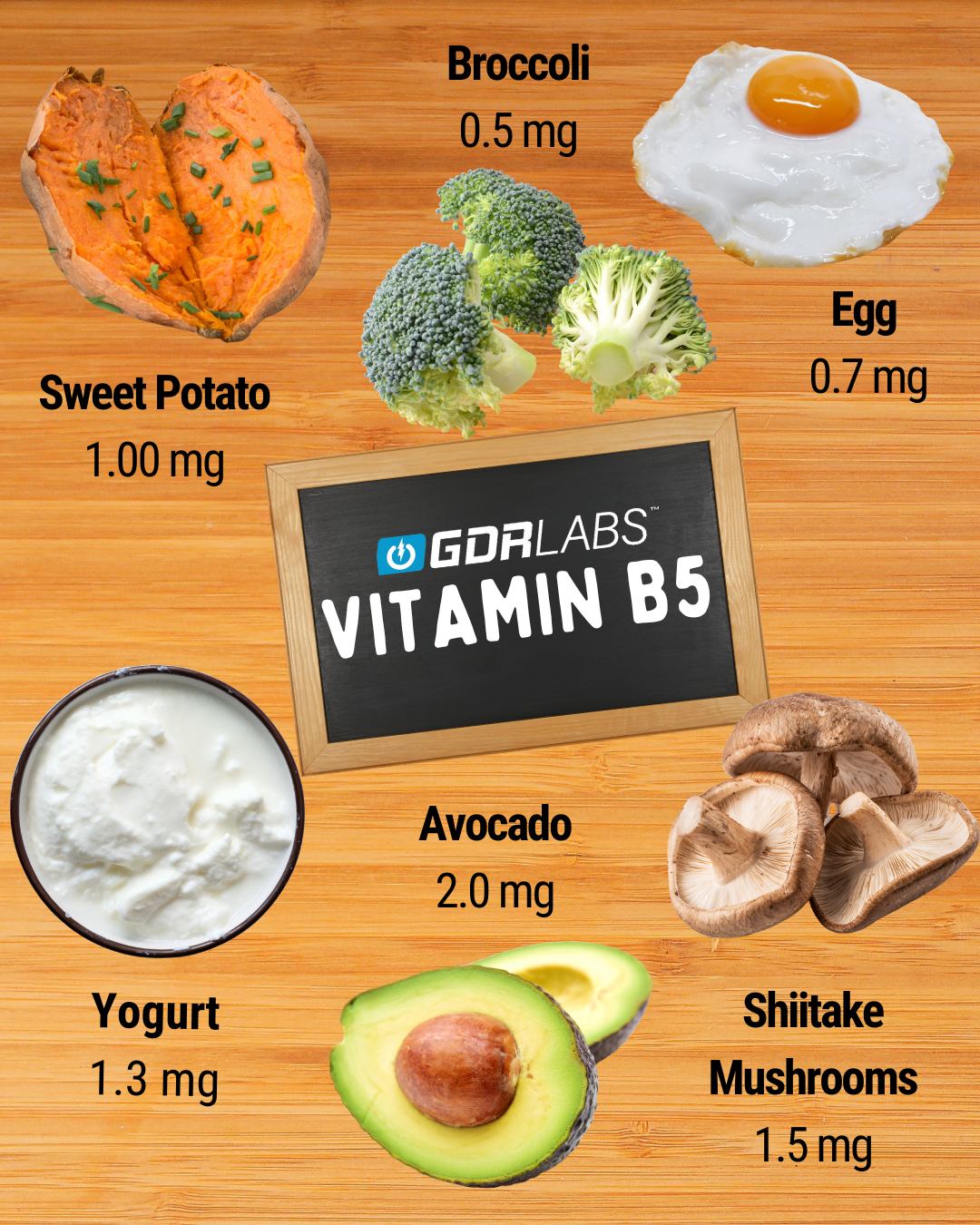Vitamins, Naturally: The Power of Pantothenic Acid (Vitamin B5)Updated 6 months ago
Vitamins, Naturally: The Power of Pantothenic Acid (Vitamin B5)

In our continued journey toward nourishing the body naturally and informing you of how you can supplement through whole foods, we now turn to another, virtually unsung hero in the B-vitamin family: Pantothenic Acid, also known as Vitamin B5. This water-soluble vitamin is found in “nearly every food group,” which makes sense, considering the Greek word “pantothen” means “from everywhere.”
But don’t let its natural availability fool you. While it’s found in many foods, it’s just as easily lost in processing, overcooking, or poor dietary habits, which I think we can all safely say are far too common in Americans’ diets.
Here’s why you should care about how you source B5— and how to ensure you’re getting your fill naturally.
What Does Vitamin B5 Actually Do for the Body?
Pantothenic acid has many essential biological functions critical to:
- Energy Production: Vitamin B5 helps your body convert food (especially fats and carbohydrates) into usable energy, which is vital to life.
- Hormone Support: Like most other B vitamins, it plays a little-known, key role in creating adrenal hormones, like cortisol, which are vital for stress response and metabolism regulation.
- Skin and Hair Health: It’s often included in skincare for its potential to help the body heal wounds and reduce acne inflammation.
- Nervous System Function: B-vitamins are your nervous system’s one-stop shop; B5 supports a healthy nervous system, helping regulate mood and mental clarity.
What are the Top Whole Food Sources of Vitamin B5?
The best way to get your Vitamin B5? Straight from whole, minimally processed foods. Here are some excellent and easily adopted options:
Food | Serving Size | Pantothenic Acid (mg) |
Shiitake mushrooms | ½ cup, cooked | 1.5 mg |
Avocado | 1 whole | 2.0 mg |
Sunflower seeds | ¼ cup | 2.0 mg |
Chicken liver | 3 oz, cooked | 6.7 mg |
Salmon | 3 oz, cooked | 1.9 mg |
Sweet potato | 1 medium, baked | 1.0 mg |
Eggs | 1 large | 0.7 mg |
Lentils | ½ cup, cooked | 0.6 mg |
Broccoli | ½ cup, cooked | 0.5 mg |
Yogurt (plain, whole) | 1 cup | 1.3 mg |
When it comes to adequate B Vitamin nutrition, you notice a pattern in B-complex (Multiple B Vitamins) foods that naturally occur!
Daily adult requirement (19+): Around 5 mg daily — as noted above, easily met with chicken livers… or you could go for a balanced, whole-food diet (*raises hand forcefully*).
Keep It Whole, Keep It Natural
Refining, freezing, and reheating foods can drastically reduce B5 levels. Your best bet? Go fresh, go simple, and keep meals vibrant in color! Stir-fried veggies, hearty grain bowls, or a fresh smoothie can help meet your daily needs while boosting overall vitality and introducing even more beneficial macro and micronutrients.
The Bottom Line
Pantothenic acid might be “everywhere,” but benefiting from it requires intention in what and how you choose to eat. By prioritizing real, unprocessed foods, you’re not just chasing nutrients — you’re building a sustainable, energized body from the inside out, and creating eating patterns that can last you a lifetime… a quality one, at that.
Thanks for sticking around and continuing our natural vitamin journey! Stay tuned for more in our "Vitamins, Naturally" series as we break down each essential vitamin and how you can get more of it — nature’s way. Next week, we tackle pyridoxine or Vitamin B6!